Related Content
Something from Nothing
21 November 2016
Teak round log export specialist, Proteak, ventures into eucalyptus in Mexico in a big and bold way.
10th November 2020
José Carlos Rocha Filho, marketing and commercial manager at Latin Equipment Norte, explores the mechanization of teak plantation harvesting in southeastern Mexico.
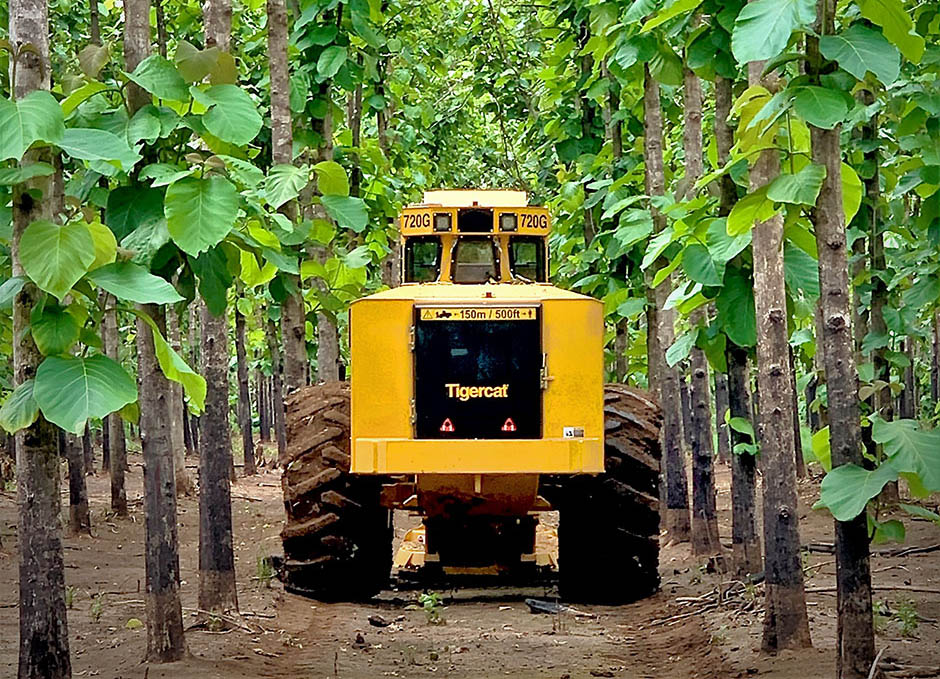
The commercial planting of teak forests in Mexico began in 2000, primarily in the southeastern region of the country. Today, Mexico’s teak plantations amount to 30 000 ha (74,000 acres), ranking the country among the top five producers worldwide.
Currently, teak products are best described as a niche of the timber supply chain business, with a total annual trade value amounting to 450 million USD per year. 90% of the total goes straight to the Asian market, with India being the primary importer.
This hardwood is widely known for its quality, beauty, durability, and easy workability compared to other hardwoods. It is used extensively in India for the construction and furniture industries, and there is significant demand from luxury car manufacturers and boat builders.
Decades of overharvesting, illegal logging, and mounting public pressure have resulted in a severe reduction in native teak supply from natural forests in South Asia. Extreme deforestation of these natural stands has occurred primarily in countries like India, Myanmar, Laos and Thailand. This, along with the implementation of trade sanctions, have not only served to drive the cost of teak wood higher, but has also led consumers to look for environmentally sustainable alternative sources. As such, many forestry companies began to grow the species in the subtropical Americas.
Due to the massive size of native teak trees in Asia, operations were typically harvested using a very manual process. Teak forestry management in Central America has been conducted by way of a selective thinning system: a first thinning occurs at the age of three to four years, followed by a second thinning at age six to eight years, a third thinning at ten to twelve years and a final harvest at age eighteen to twenty years. The trees are felled manually using a chainsaw and then extracted to roadside using a small tractor fitted with a rear grab-type attachment.
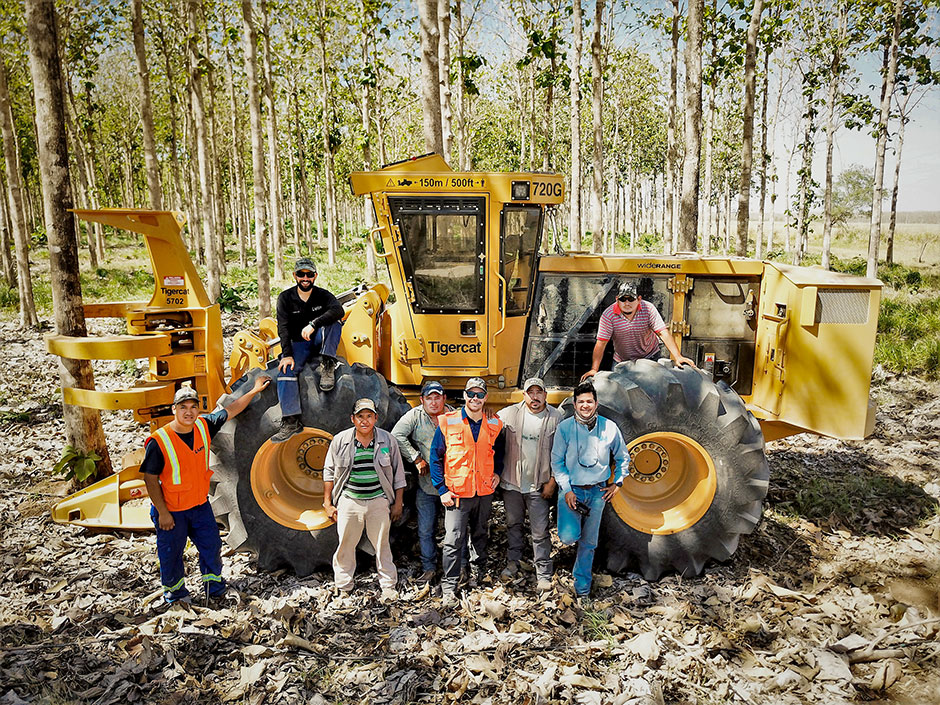
Latin Equipment Norte staff and the harvesting team. Mechanization has improved the workers’ skill level, while increasing productivity and reducing workplace accidents.
Professional assessment of timber harvesting operations is part of my routine. Every month, we receive requests and provide customized solutions to meet customer demands. In 2018, Latin Equipment Norte, based in Panama, started working closely with different teak growers throughout Central America and Mexico. We initiated the journey with Latin Equipment Norte authorities, Derek Smythe, director, and Gabriel Turturiello, managing director, by visiting the Yucatán Peninsula. After consulting with several forestry companies and contractors involved with teak wood, something caught our attention. We realized there was a lack of consistent management techniques.
We had heard about some tests in Brazil using harvesting heads, and in Ecuador using feller bunchers, but not something that we might have considered consistent in terms of a proper mechanized system.
WE FIRMLY BELIEVE THAT THE FUTURE OF A TEAK INDUSTRY THAT IS SCALABLE, ETHICAL AND SUSTAINABLE LIES IN SOUTHERN MEXICO, CENTRAL AND SOUTH AMERICA.
– José Carlos Rocha Filho, Latin Equipment Norte
Our concern was understanding the relationships among the species we were managing, the equipment, conditions, and local culture as well. All of that made us reflect a lot on how purpose-built equipment might support the growing harvesting operations safely, profitably and sustainably.
When I visited the plantations for the first time, the landscape took me straight back to 2015 when I had an opportunity to carry out studies involving forestry machinery in the southern United States. At that time, I worked closely with fleets of drive-to-tree feller bunchers and skidders, and thanks to that previous experience on fl at terrain, I had a firm insight that the full-tree system could lend itself well to Mexico’s southeastern plantations. On that very same day, I called Ivan Maillet, Tigercat international sales, to brainstorm some ideas.
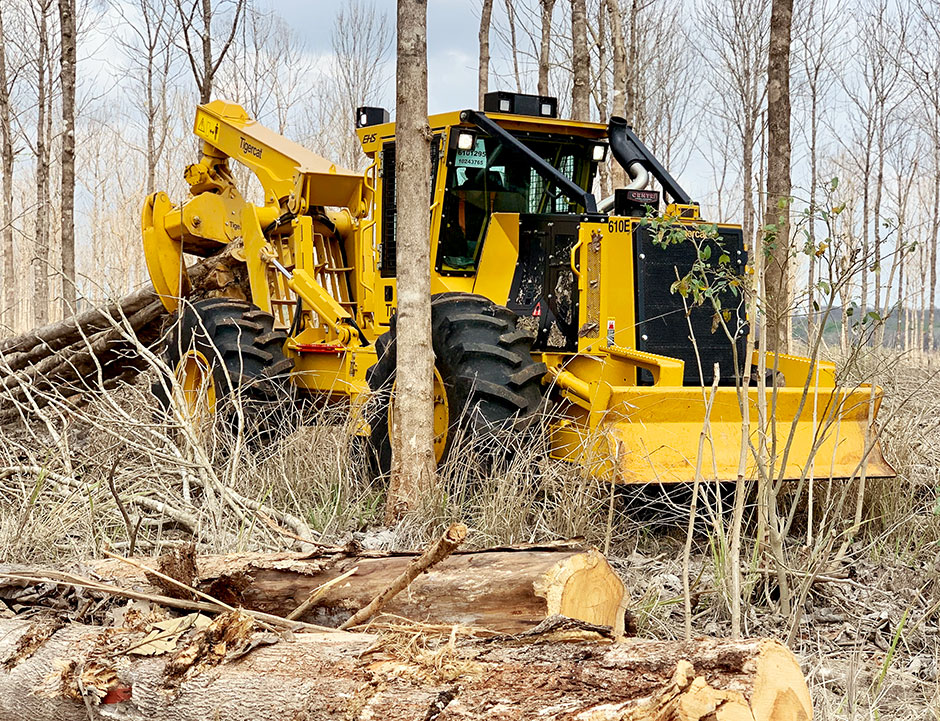
The 610E skidding in Campeche.
The demand for trading an increasingly large amount of wood to Asia has triggered the need to improve and develop the entire teak supply chain in Mexico’s southeast region. Due to labour force shortages and high incidences of workplace accidents, many forestry companies and contractors have been seeking out viable methods to mechanize teak harvesting operations.
Teak logs have significant added value when they are free of deep scratches or damage. Therefore, the equipment chosen should interact appropriately with the felled trees and especially with the remaining stand in the case of thinning. From our perspective, the first challenge was selecting the right equipment capable of carefully felling and handling the trees, and also a machine with a narrow-offset wheel for seamless transitions between thinning and final felling applications.
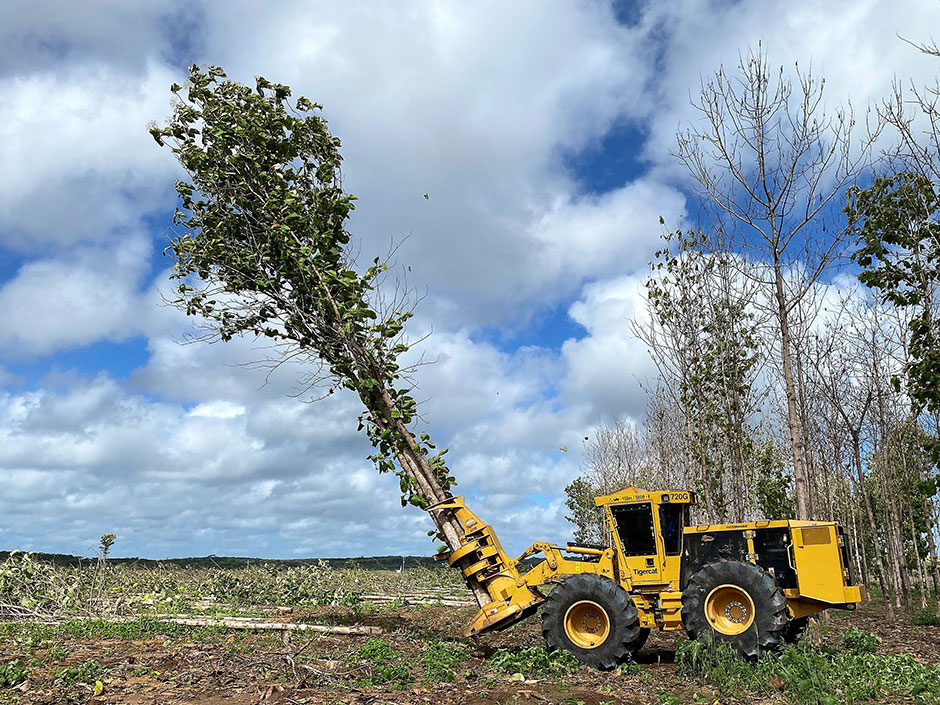
José comments, “It is incredible how quickly and precisely the feller buncher can lay wood down.”
Considering the conditions and variables, the 720G drive-to-tree feller buncher was the first model that popped into our minds – a simple and proven machine, easy to operate, highly productive and with low long-term maintenance costs. Because of its relative size and stability, the 720G can both control mature teak trees and manoeuvre with them easily. What more could you expect from a felling machine.
To sum up, we selected the 720G feller buncher and 610E skidder with the aim to optimize productivity and improve worker safety. After a few months running the 720G, we won the trust of those who initially had bet against the success of the project. Once they had the opportunity to watch the equipment in action, they quickly understood how flawlessly the equipment could work. We knew that as long as the operations remained within defined parameters – namely flat terrain – that the harvesting system would excel.
It is incredible how quickly and precisely the feller buncher can lay wood down. The 5702 felling saw is performing very well. Stem diameters are approaching 50 cm (20 in) with some irregular stem form. The head is accumulating up to four stems per cycle, while demonstrating rapid saw recovery. This is allowing the system to comfortably meet the defined production targets.
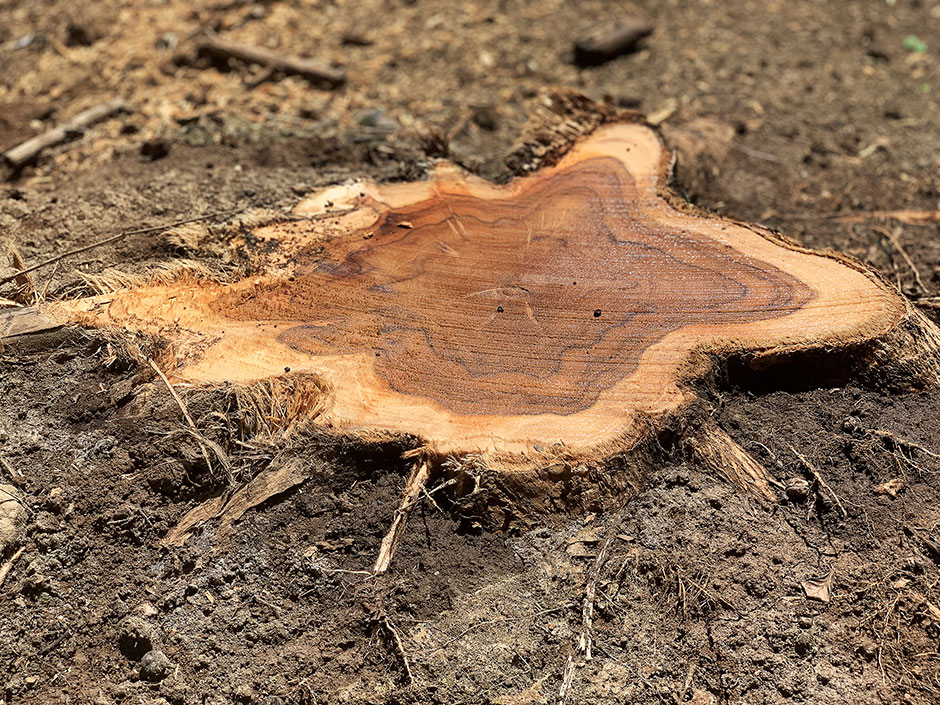
Among all types of typical plantation species, teak has one of the highest economic values.
The most valuable part of the teak tree is the thicker part of the stem, which is typically at ground level. After understanding the machine’s design, functions and daily maintenance, the main challenge to overcome was training operators to cut as close as possible to the ground, maximizing log recovery.
After a few training sessions, we noticed that operators were achieving outstanding results. We are now carrying out some tests to find out which types of saw teeth will be the most suitable and resistant for this particular application.
Based on our knowledge and experience thus far, we firmly believe that the future of a teak industry that is scalable, ethical and sustainable lies in southern Mexico, Central and South America. We are convinced that Latin Equipment’s efforts and the exciting results of this project will not only serve to drive further penetration of Tigercat machines into Mexican teak operations but also to other hardwood growers throughout Latin America.
I AM CONFIDENT THESE MACHINES WILL BE THE FIRST OF MANY PIECES OF PURPOSE-BUILT FORESTRY EQUIPMENT TO COME INTO OUR TERRITORY.
– José Carlos Rocha Filho
José Carlos Rocha Filho is a marketing and commercial manager at Latin Equipment Norte. He holds a bachelor’s degree in Forest Engineering from the University of São Paulo (USP), Brazil, specializing in forestry and agriculture machinery operations at the Southern Illinois University. At Latin Equipment Norte, he is in charge of conducting business development, promoting new opportunities and innovative solutions for the forestry industry throughout Ecuador, Colombia, Caribbean, Central America and Mexico. José’s father was involved in machinery maintenance, exposing José to heavy-duty equipment at a very young age. José’s passion has continued ever since.
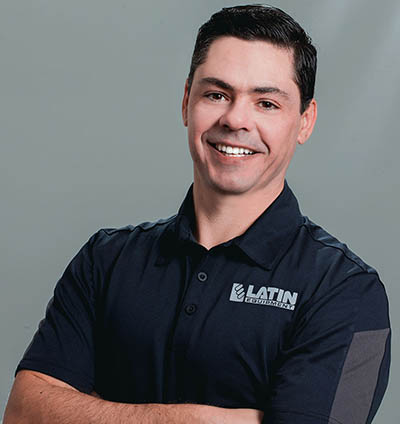
21 November 2016
Teak round log export specialist, Proteak, ventures into eucalyptus in Mexico in a big and bold way.